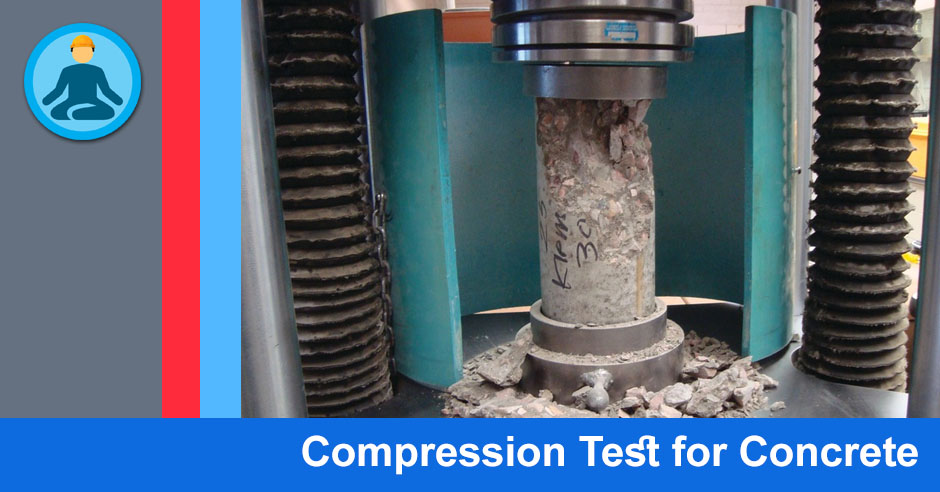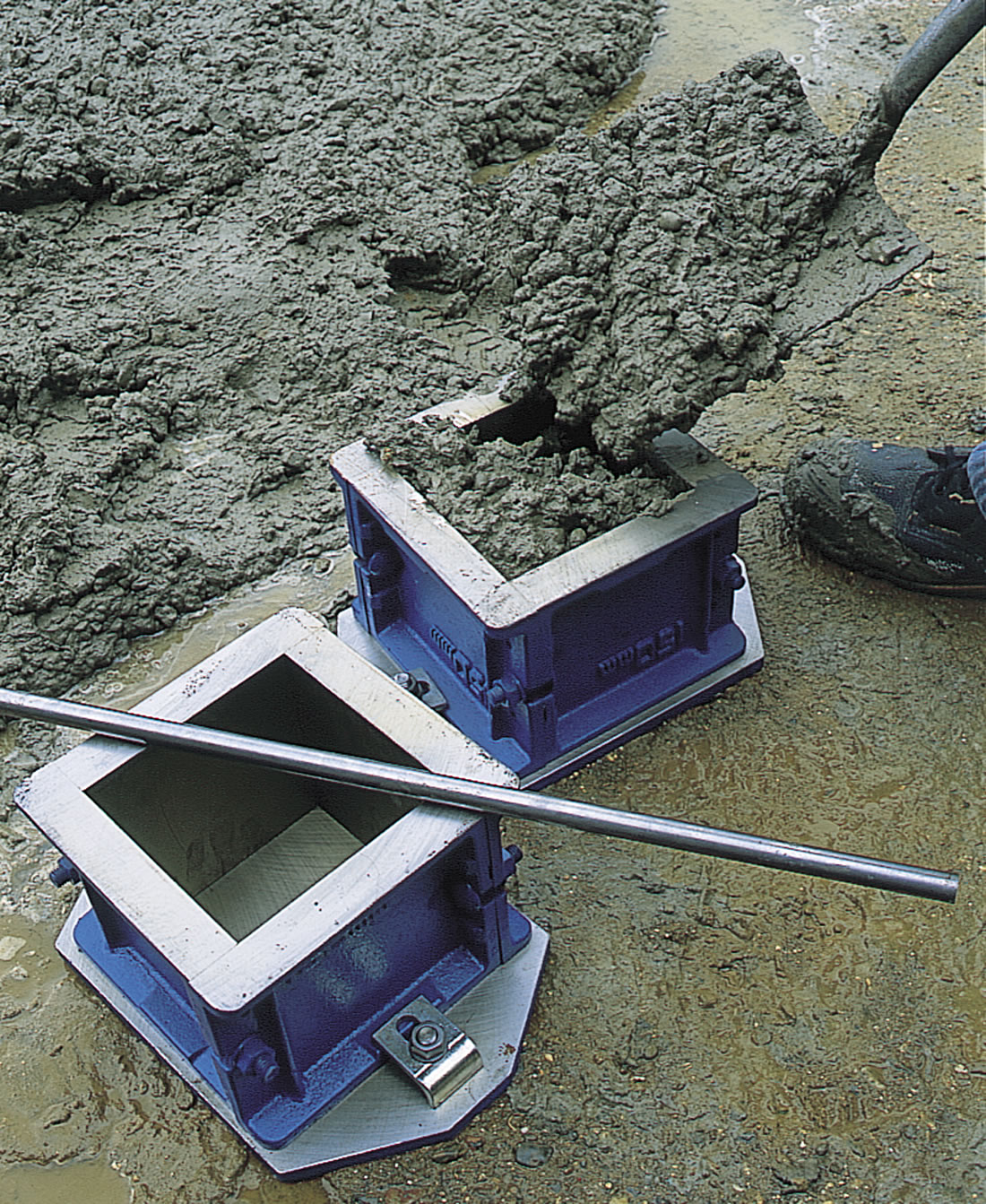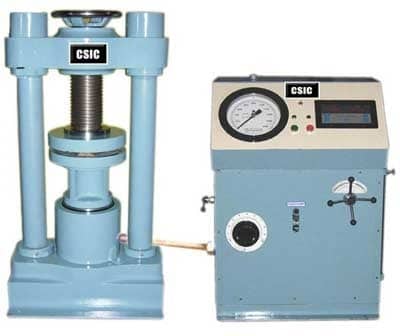Compression tests are conducted on cubes made from the concrete that is being placed and the tests are conducted at intervals of 3, 7 and 28 days for which laboratory standards have been set. It is also possible to hasten these tests by steam curing of the samples so that earlier results are obtained.

Tests are also possible to determine concrete strengths, which are linked to cement content, and are conducted subsequent to the completion of the structure. Core samples are taken and tested for compressive strength. There are also non-destructive tests available to test concrete strength with the use of ultrasound. Engineers also resort to actual load tests of a structure, if indicative compressive strengths of samples taken during concreting show values lower than desired.
The Compression Test
The compression test shows the compressive strength of hardened concrete. The compression test shows the best possible strength concrete can reach in perfect conditions. The compression test measures concrete strength in the hardened state. Testing should always be done carefully. Wrong test results can be costly.
The testing is done in a laboratory off-site. The only work done on-site is to make a concrete cylinder for the compression test. The strength is measured in Megapascals (MPa) and is commonly specified as a characteristic strength of concrete measured at 28 days after mixing. The compressive strength is a measure of the concrete’s ability to resist loads which tend to crush it.
Apparatus for compression test
- Cylinders (100 mm diameter x 200 mm high or 150 mm diameter x 300 mm high) (The small cylinders are normally used for most testing due to their lighter weight).
- Small scoop
- Bullet-nosed rod (600 mm x 16 mm)
- Steel float
- Steel plate

How to do a compression test?
Procedure for compression test of concrete
- Clean the cylinder mold and coat the inside lightly with form oil, then place on a clean, level and firm surface, ie the steel plate. Collect a sample.
- Fill 1/2 the volume of the mold with concrete then compact by rodding 25 times. Cylinders may also be compacted by vibrating using a vibrating table.
- Fill the cone to overflowing and rod 25 times into the top of the first layer, then top up the mold till overflowing.
- Level off the top with the steel float and clean any concrete from around the mold.
- Cap, clearly tag the cylinder and put it in a cool dry place to set for at least 24 hours.
- After the mold is removed the cylinder is sent to the laboratory where it is cured and crushed to test compressive strength

